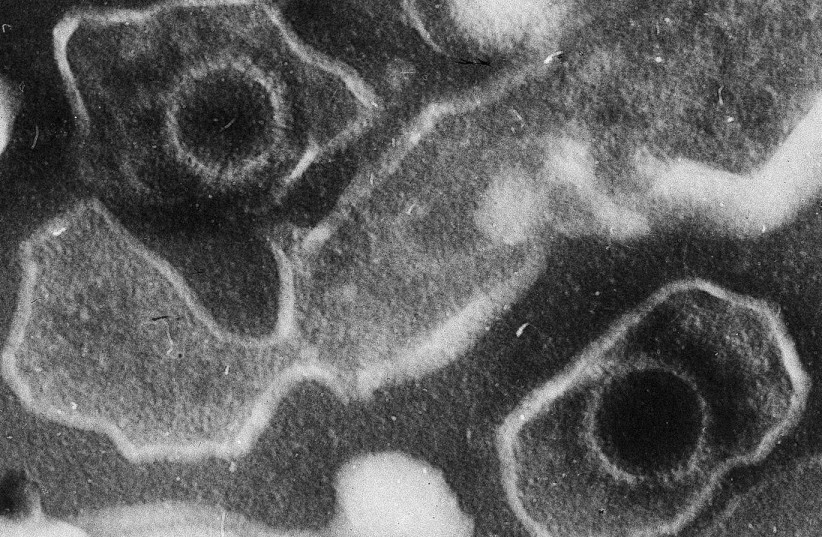Study on identical twins offers schizophrenia treatment insight

Prof. Shani Stern, leading a study at the University of Haifa, has revealed genetic variations in schizophrenia among discordant monozygotic twins, shedding light on potential treatment avenues. In cases where only one of a pair of identical twins experiences schizophrenia—a chronic mental ailment marked by recurrent episodes of psychosis, distorted perception of reality, paranoia, hallucinations, social seclusion, and cognitive disarray—variations in the expression of synaptic genes and synaptic activity emerge as early as fetal development.
Schizophrenia impacts approximately 1% to 1.5% of the global populace, with genetic, epigenetic, and environmental factors known to contribute to its onset. The synapse, acting as the junction between neurons, facilitates synaptic activity, wherein an electrical charge is transmitted from one nerve cell to another, influencing the firing likelihood of the postsynaptic neuron.
This revelation stems from a recent study conducted at the University of Haifa, published in the esteemed journal Molecular Psychiatry by the Nature group. Spearheaded by Prof. Shani Stern from the Sagol Neurobiology Department, the study, titled “Monozygotic twins discordant for schizophrenia differ in maturation and synaptic transmission,” scrutinized genetic distinctions among pairs of identical twins, where one twin was afflicted with schizophrenia while the other remained unaffected.
“Currently, most drugs for treating schizophrenia aim to calm the episodes and modulate the activity of the brain neurotransmitter called dopamine,” Stern said. “We believe that the results of this study, which for the first time identified specific genes in which changes occur, are grounds for cautious optimism concerning the future development of drugs and treatments for the disease focusing on these genes,” explained the author of the study.
Schizophrenia genetics

Despite ongoing research, the exact causes behind the development of schizophrenia remain elusive, with much attention directed towards the abnormal activity of dopamine. Previous research by Stern uncovered a link to changes in synapses, the critical junctions facilitating neural communication in the brain.
In a recent study, Stern collaborated with researchers from California’s Salk Institute for Biological Studies and Mt. Sinai School of Medicine in New York to delve into the genetic disparities within synapses. Their focus shifted to exploring genetic variations in individuals who would typically share identical DNA sequences—pairs of monozygotic twins, one affected by schizophrenia and the other not.
Identifying such twins proved challenging due to the rarity of schizophrenia in the population. Nonetheless, the team located two pairs of affected twins and three pairs of unaffected identical twins, serving as a control cohort.
Utilizing Sendai-virus reprogramming technology, a method regularly employed in Stern’s lab, the researchers reprogrammed skin cells from all participants into stem cells, effectively retaining each individual’s unique DNA sequence. These cells were then differentiated into nerve cells of the hippocampus, enabling the monitoring of hippocampal development from early stages.
In the initial phase, significant differences emerged in synaptic quantity, size, and neuronal connectivity among the groups. Twins afflicted with schizophrenia exhibited the lowest synaptic count, smaller currents, and fewer neuronal connections compared to the control group. Conversely, unaffected twins displayed the highest synaptic quantity, larger currents, and greater neuronal connectivity. Siblings of schizophrenic twins constituted an intermediary group, with more synapses and larger currents than their affected siblings but fewer than the healthy control twins.
In the subsequent phase, the researchers scrutinized RNA and DNA variances between the twins, identifying 20 significant genes exhibiting differential expression in the affected twins compared to their healthy counterparts. Notably, all identified pathways pertained to synaptic mechanisms, underscoring deficiencies in affected twins relative to the control group.
“Since we can monitor genetic activity from the very earliest stages of the development of the cell, we found that the changes between the twin at the DNA and RNA levels begin during the fetal stage, just after the point when the fetus divides into two – a few days after the beginning of the pregnancy,” Stern explained.
In the third phase of their investigation, the researchers analyzed the electric potentials within neurons, revealing a consistent pattern of three distinct groups. Twins affected by schizophrenia exhibited the slowest developmental trajectory, accompanied by significantly reduced synaptic activity and excitability compared to the control twins. Meanwhile, the electric and synaptic activity of healthy individuals with schizophrenic siblings fell between those of the affected twins and the unaffected pairs, forming an intermediate grouping.
“Our study reinforces our previous finding concerning the connection between the defective development of the synapses in the brain and the development of schizophrenia. Here, we took an important step forward, identifying the genes whose expression changes and the stage at which this occurs. These findings open up new possibilities as we attempt to understand the causes behind the development of schizophrenia and, of course, the way to treat the disease,” concluded Stern.







Fascinating study – if limited. It needs replication to add numbers to the data!